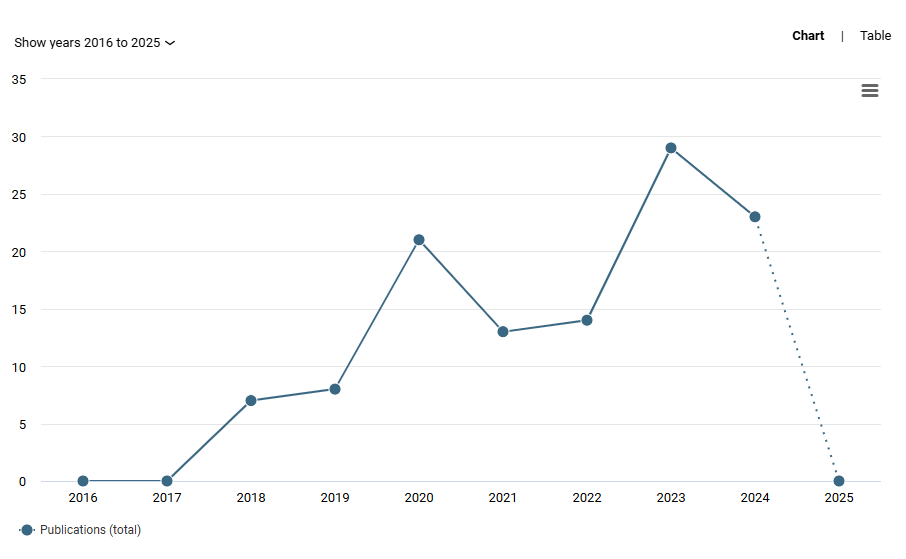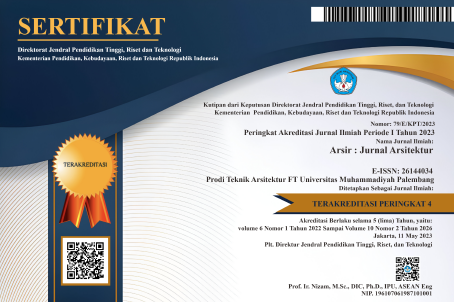Studi Komparatif Penerapan Pendekatan Universal Design
Studi Kasus: Masjid Al Mujahidin Bandar Lampung, Masjid Baitus Shobur Tulang Bawang Bawat, dan Masjid Sudalmiyah Rais Surakarta
DOI:
https://doi.org/10.32502/arsir.v10i1.693Kata Kunci:
masjid, universal design, aksesibilitas, arsitektur inklusif, disabilitasAbstrak
Masjid tidak hanya berfungsi sebagai tempat ibadah, tetapi juga sebagai pusat aktivitas sosial umat Islam. Namun, banyak masjid di Indonesia masih belum memenuhi prinsip aksesibilitas bagi kelompok rentan seperti lansia, penyandang disabilitas, dan individu berkebutuhan khusus. Padahal, menurut BPS (2022), terdapat lebih dari 22 juta penyandang disabilitas di Indonesia. Penelitian ini menekankan pentingnya penerapan konsep Universal Design dalam arsitektur masjid guna menciptakan ruang ibadah yang inklusif, aman, dan nyaman bagi semua kalangan. Dengan mengacu pada tujuh prinsip Universal Design, studi ini mengevaluasi implementasinya pada tiga masjid di Indonesia—Masjid Al Mujahidin di Bandar Lampung, Masjid Baitus Shobur di Tulang Bawang Barat, dan Masjid Sudalmiyah Rais di Surakarta. Melalui pendekatan deskriptif kualitatif dan analisis perbandingan, penelitian ini mengungkap kelebihan, kekurangan, serta tantangan dalam mewujudkan desain masjid yang ramah bagi semua. Temuan ini diharapkan menjadi pijakan dalam pengembangan masjid yang lebih inklusif ke depannya.
Kata Kunci :Masjid, Universal Design, aksesibilitas, arsitektur inklusif, disabilitas.
Unduhan
Diterbitkan
Cara Mengutip
Terbitan
Bagian
Lisensi
Hak Cipta (c) 2025 Putri Anjani, Suci Lestari

Artikel ini berlisensiCreative Commons Attribution-ShareAlike 4.0 International License.
Arsir: Jurnal Arsitektur (AJA) have CC-BY-SA or an equivalent license as the optimal license for the publication, distribution, use, and reuse of scholarly work.
Authors who publish Arsir: Jurnal Arsitektur (AJA) agree to the following terms: Authors retain copyright and grant the Arsir: Jurnal Arsitektur (AJA) right of first publication with the work simultaneously licensed under a Creative Commons Attribution License (CC BY-SA 4.0) that allows others to share (copy and redistribute the material in any medium or format) and adapt (remix, transform, and build upon the material) the work for any purpose, even commercially, with an acknowledgement of the work's authorship and initial publication in Arsir: Jurnal Arsitektur (AJA). Authors are able to enter into separate, additional contractual arrangements for the non-exclusive distribution of the journal's published version of the work (e.g., post it to an institutional repository or publish it in a book), with an acknowledgement of its initial publication in Arsir: Jurnal Arsitektur (AJA). Authors are permitted and encouraged to post their work online (e.g., in institutional repositories or on their website) prior to and during the submission process, as it can lead to productive exchanges as well as earlier and greater citation of published work (see The Effect of Open Access).
![]()
Work is distributed below This work is licensed under a Creative Commons Attribution-ShareAlike 4.0 International License.




